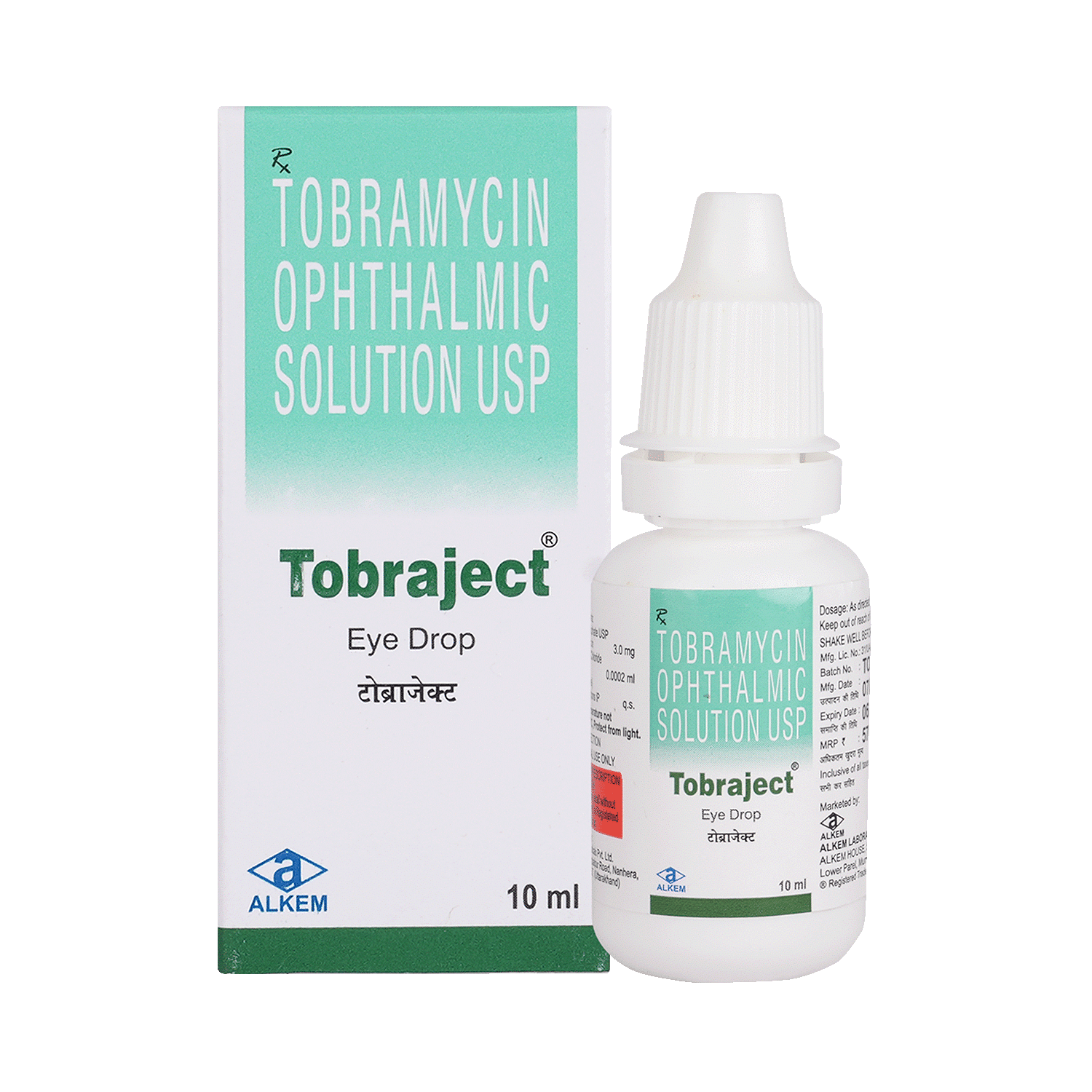
Fytobra 0.3% Eye Drop
Manufacturer
Syntonic Lifesciences
Salt Composition
Tobramycin (0.3% w/v)
Key Information
Short Description
Fytobra 0.3% Eye Drop is an antibiotic medicine used to treat bacterial infections of the eye and eyelids, and may also help prevent infection after an eye injury or surgery.
Dosage Form
Eye Drop
Introduction
Fytobra 0.3% Eye Drop is an antibiotic medicine that is used to treat bacterial infections of the eye (e.g., conjunctivitis) and the eyelids (e.g., blepharitis). It may also help to prevent an infection after an eye injury or surgery.
Directions for Use
This medicine is for external use only. Use it in the dose and duration as advised by your doctor. Check the label for directions before use. Hold the dropper close to the eye without touching it. Gently squeeze the dropper and place the medicine inside the lower eyelid. Wipe off the extra liquid.
How it works
Fytobra 0.3% Eye Drop is an antibiotic. It stops bacterial growth in the eye by preventing synthesis of essential proteins required by bacteria to carry out vital functions. This treats your eye infection.
Quick Tips
Your doctor has prescribed Fytobra 0.3% Eye Drop to treat bacterial infections of the eye. Do not skip any doses and finish the full course of treatment even if you feel better. Fytobra 0.3% Eye Drop may cause damage to cornea on long-term use. Apply pressure on the corner of the eye (close to the nose) for about 1 minute immediately after instilling the drop. Wait for at least 5-10 minutes before delivering the next medication in the same eye to avoid dilution. Stinging sensation may occur for 1-2 mins. Notify your doctor if it persists for longer. Fytobra 0.3% Eye Drop may cause damage to cornea on long-term use. Make sure to use it within 4 weeks of opening the bottle.
Related Medicines

Tobra Eye Drop

Tobraject Eye Drop

Tobrabact Eye Drop

Kytobr 0.3% Eye Drop

Tobracare Eye Drop

Lytob 0.3% Eye Drop

Obivin 0.3% Eye Drop

Tobaget 0.3% Eye Drop

Tobin 0.3% Eye Drop

Magbrex 0.3% Eye Drop
Frequently asked questions
What bacteria does Fytobra 0.3% Eye Drop kill?
Fytobra 0.3% Eye Drop is effective against a broad range of bacteria, including Staphylococcus aureus (S. Aureus) and Staphylococcus epidermidis. It can also be used against certain species of Streptococci, Pseudomonas aeruginosa, Escherichia coli, Klebsiella pneumoniae, Enterobacter aerogenes, Proteus mirabilis, Morganella morganii, most Proteus vulgaris strains, Haemophilus influenza, and H. aegyptius, Moraxella lacunata, Acinetobacter calcoaceticus, and some Neisseria species. It is crucial to use this medication only as prescribed by your doctor for the appropriate condition.
How long should I use Fytobra 0.3% Eye Drop?
The duration of treatment will depend on the severity and type of infection, decided in consultation with your doctor. For mild to moderate infections, you might be advised to apply it as a routine twice daily (4 times per day) for 1-2 weeks. In severe cases, the dosage may increase, with more frequent applications being advised. Use the prescribed dosage exactly as advised by your doctor.
How should Fytobra 0.3% Eye Drop be used?
Before using Fytobra 0.3%, wash your hands thoroughly. Avoid touching the dropper tip against your eye or any other surface. Tilt your head slightly and instil one drop into your affected eye. Close your eye for 2-3 minutes with your head tilted down to avoid blinking or squinting. Gently press your finger to the inside corner of your eye for about a minute to prevent drainage into your tear duct. If you need to apply more than one drop, wait around 5 minutes before applying the next.
What if I don't get better after using Fytobra 0.3% Eye Drop?
If you do not feel improvement after completing your full course of medication, inform your doctor immediately. If your symptoms worsen or do not improve, also inform your doctor.
Can I stop using Fytobra 0.3% Eye Drop when I feel better?
No, you should not stop using Fytobra 0.3% Eye Drop without consulting your doctor, even if you are feeling better. It is essential to continue the prescribed course of treatment until your doctor gives you a clearance for stopping.


